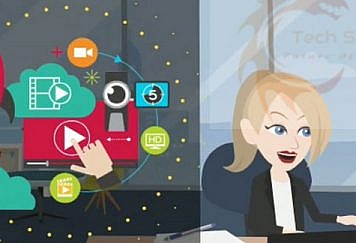The Evolution of Online Education
Today, online education is rapidly becoming a dominant form of learning. According to one count, over 12 percent of all college students exclusively enroll in online courses; other research suggests that nearly three-quarters of all college students expect some of their courses to be fully online. Another survey still indicates that more than half of college students prefer the online learning experience to traditional classrooms. Online education is popular in 2022 — but it was not always that way.
Online education has evolved from a niche and suspect path to learning to the widespread and valued learning tool it is today. The history of online education is a fascinating story that should inspire students to take advantage of this miraculous and exciting technology service.
The Origins of Distance Learning
Online education has its roots in the origin of the U.S. Postal Service, more than a century before the advent of the internet. Before a reliable method for sending and receiving mail was created, there were a handful of attempts to connect students and teachers through missives. Classes were almost entirely restricted to the skill of reading and writing in shorthand, but the irregularity and uncertainty of sending mail made many of these efforts ineffectual and obsolete.
With the introduction of the Postal Service, institutions of learning were able to develop programs to reach students who lived outside the reach of campuses. Called “correspondence colleges,” these schools distributed informational and instructional content to students and received assignments and tests for professors to evaluate. The first distance learning program of this type was called the Society to Encourage Studies at Home, established in Boston, Massachusetts in 1873 by female education pioneer Anna Eliot Ticknor, who sought to bring education to American women. Unlike previous correspondence classes, the Society offered personalized courses and interactive communications between students and professors, so American women of every class could access the education of her dreams. Though the Society ceased offering courses after 24 years, it inspired an entire industry of countless correspondence colleges for students of every interest and background.
Unfortunately, not every correspondence college was as altruistic as Anna Eliot Ticknor’s. Many distance learning outfits were scams, collecting students’ tuition without any intention of providing any level of instruction. Perhaps worse, some distance learning institutions were little more than degree mills, dispensing all manner of credentials to students for nominal fees. As a result, essentially anyone could display qualifications for a certain field but lack any knowledge or experience within that field. This issue with distance learning persisted through the 19th and 20th centuries, which is why elearning institutions were initially received with scorn and stigma.
Distance Learning in the Digital Age
Changes to the established model of correspondence colleges began in the middle of the 20th century, when public broadcasting services around the world began televising college classes. By tuning into the same programming week after week, students could gain skills and knowledge for free, in the comfort of their homes. In the 1980s, after the advent of the personal computer and the widespread adoption of computing devices in the home, the field of distance learning underwent a revolution, with education opportunities becoming available on floppy discs, compact discs and, eventually, over the internet.
Founded in 1989, University of Phoenix was the first fully online collegiate institution, offering programs for bachelor’s and master’s degrees — though for many years, it remained unaccredited. Prior to the University of Phoenix, a handful of existing universities and colleges were experimenting with digital classrooms, and as the internet became more widespread, these classrooms moved online for students to access from their homes. At the turn of the 21st century, prestigious schools began offering courses online, bringing high-quality education to the masses, effectively eroding the negative reputation of distance learning. Today, any student at any stage of life can access online short courses from some of the best universities around the world.
The Online Education Revolution
The year 2020 brought the beginning of the COVID pandemic and extensive lockdowns that closed almost all spaces for public gatherings — to include university campuses and classrooms. As a result, students had only one option for continuing their studies: online education. As the fear of COVID wanes and education institutions return to normal, enrollment in online courses remains high. Soon, participation in distance learning could outweigh that of traditional education — making learning more accessible to everyone.
Follow Techstrange for more!





